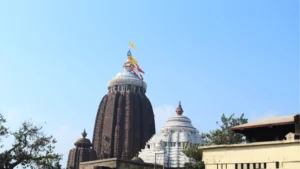Sedition laws in India serve as legal safeguards against acts that intend to incite violence, disorder, or enmity against the government or state authorities. These laws play a critical role in maintaining public order, preserving national security, and upholding the integrity of the state.
The significance of comprehending sedition laws lies in the delicate equilibrium they seek to establish between protecting national interests and respecting the freedom of expression. In a democratic society like India, these laws influence not only legal proceedings but also shape the broader discourse surrounding civil liberties and the right to dissent.

Sedition Laws in India
Section 124A of the Indian Penal Code (IPC) outlines sedition as acts that bring contempt, hatred, or disaffection toward the government, to incite public disorder or violence. These laws initially emerged during British colonial rule to suppress opposition to the British administration.
Historical Context and Colonial Origins:
The roots of sedition laws are deeply embedded in India’s colonial past. They were tools employed by the British to suppress voices of dissent and quell any attempt at rebellion against colonial rule. Post-independence, the retention of these laws raises questions about their compatibility with democratic ideals and individual freedoms.
Role of Sedition Laws in Modern India:
In contemporary India, sedition laws continue to influence legal proceedings and discussions on civil liberties. The delicate interplay between preserving national integrity and safeguarding the rights of individuals to express their opinions highlights the ongoing relevance of these laws.
Key Provisions of Sedition Laws
A. Section 124A of the IPC:
Section 124A of the IPC serves as the bedrock of sedition laws in India. It stipulates that any person who, by words spoken or written, or by signs or representations, brings or attempts to bring hatred or contempt towards the government, or excites or attempts to excite disaffection, is charged with the offense of sedition. Key aspects of this provision include:
- Verbal and Written Expression: The law covers both spoken and written words, ensuring that various modes of communication are subject to its scope.
- Intent and Disaffection: The focus on intent highlights that mere criticism might not qualify as sedition unless it is accompanied by an intention to incite violence or public disorder.
B. Defining Seditious Acts and Intent:
Understanding the scope of seditious acts and the requisite intent is crucial in evaluating cases under sedition laws:
- Seditious Acts: The provision encompasses a wide range of acts, from making inflammatory speeches that promote rebellion to publishing materials that encourage hostility against the government.
- Intent Requirement: To secure a conviction, authorities must establish that the accused had the intention to incite disaffection, hatred, or violence against the government.
C. Cases Illustrating Application of Sedition Laws:
Examining cases where sedition laws have been invoked provides insights into their real-world application:
- Kanhaiya Kumar Case: The arrest of Jawaharlal Nehru University student leader Kanhaiya Kumar in 2016 brought attention to the application of sedition laws in cases involving student activists and dissenters.
- Journalists and Activists: Instances where journalists, activists, and citizens have been charged with sedition raise questions about the extent to which these laws are used to suppress dissent.
Balancing Act: Free Speech vs. National Security
A. Tension Between Freedom of Expression:
The tension between protecting free speech and ensuring national security underscores the complexity of applying sedition laws:
- Democratic Values: Freedom of expression is a cornerstone of democracy, allowing citizens to voice opinions, criticize, and engage in public discourse.
- National Security Concerns: On the other hand, national security requires measures to prevent violence, disorder, and threats to public order.
B. Impact on Dissent, Criticism, and Public Discourse:
- Chilling Effect: The mere existence of sedition laws can create a “chilling effect,” discouraging individuals from expressing dissenting views or criticizing the government.
- Public Discourse: A robust democracy thrives on open and diverse public discourse, which the fear of sedition charges can inhibit.
C. Notable Cases Highlighting the Challenge:
Examining specific cases brings to light the inherent challenge of balancing free speech and national security:
- Maria Ressa Case: The arrest of journalist Maria Ressa in the Philippines for her critical reporting underscores the global challenge of reconciling free speech and state interests.
- Test of ‘Clear and Immediate Danger’: The precedent set by the “clear and present danger” test in the case of Schenck v. United States provides a legal framework to assess whether speech poses a genuine threat to national security.
Controversies and Criticisms
A. Alleged Misuse of Sedition Laws:
- Suppression of Dissent: Critics argue that the vagueness of the law allows its misuse to silence legitimate dissent and stifle democratic discourse.
- Selective Application: Allegations of selective application of sedition laws against specific individuals or groups raise questions about equity and fairness.
B. Critiques from Legal Experts and Scholars:
- Ambiguity: The vague language of the law and its potential for broad interpretation raise concerns about arbitrary enforcement.
- Proportionality: Critics question whether the punishment for sedition, including imprisonment, is proportionate to the offense and whether it infringes on fundamental rights.
C. Public Debates on Reform or Repeal:
- Calls for Reform: Advocacy groups, human rights organizations, and legal experts have called for reforms to ensure that the law is not misused and respects democratic values.
- Repeal Discussions: Some argue for the outright repeal of sedition laws. Others emphasize the need for careful revision to prevent misuse while preserving national security.
Legal Debates and Judicial Interpretations
A. Landmark Court Cases Shaping Interpretation:
- Balwant Singh v. State of Punjab: This case highlighted the need for a causal connection between seditious speech and public disorder to secure a conviction.
- Shreya Singhal v. Union of India: While not a sedition case, this ruling emphasized the importance of free speech. It struck down the vague and overbroad Section 66A of the Information Technology Act.
B. Role of Courts in Safeguarding Rights:
Courts play a vital role in safeguarding fundamental rights:
- Guardians of Liberties: Courts act as custodians of citizens’ rights, ensuring that sedition laws are not applied in ways that infringe upon democratic freedoms.
- Guiding Balancing Act: Judicial decisions guide how to navigate the intricate balance between freedom of expression and national security.
International Perspectives and Comparative Analysis
A. Contrasting Sedition Laws in India and Other Countries:
- UK’s Offences Against the Person Act: The UK’s sedition laws emphasize incitement to violence rather than criticism of the government, providing a different approach to protecting national interests.
- Global Variations: Analyzing sedition laws across jurisdictions reveals diverse approaches, reflecting differing cultural, historical, and legal contexts.
B. Learning from Global Experiences:
- Australian Approach: Australia’s sedition laws require proof of an intention to facilitate terrorism, offering a unique approach to addressing threats to national security.
- Ensuring Proportionality: Learning from global experiences aids in striking a balance between safeguarding national security and protecting individual rights.
C. Implications for India’s Legal Framework:
- Reform Considerations: Comparing different legal frameworks helps identify potential reforms that align with democratic principles while addressing national security concerns.
- Informed Decision-Making: Learning from international experiences informs discussions on potential changes to India’s sedition laws.
Future Outlook
- Recent Cases Invoking Sedition Laws in India: The arrest of activists and dissenters on charges of sedition highlights the continued application of these laws in contemporary Indian society. As social, political, and technological changes shape the country, sedition laws remain an evolving and dynamic aspect of India’s legal landscape.
- Societal Changes and Political Dynamics: The rise of digital platforms has transformed the nature and reach of speech, posing new challenges in evaluating its impact on national security. As new forms of expression emerge, the application and interpretation of sedition laws may need to adapt to changing societal dynamics.
- Speculating on Potential Reforms or Developments: Ongoing debates about reforming or repealing sedition laws suggest that changes to these statutes may be on the horizon. Future developments will likely continue to grapple with balancing the protection of free speech and the preservation of national security.
A comprehensive review of sedition laws, examining their historical origins, key provisions, impact on free speech, controversies, legal debates, international perspectives, and contemporary relevance. The importance of fostering continued discourse and understanding about sedition laws as they shape the democratic fabric of India’s society.
A final call to ensure that the evolution of sedition laws aligns with democratic values, preserving the essence of free speech while responsibly addressing concerns related to national security.
Also Read: Employment Lawyers: Expert Advice on When to Hire, Why, and How






